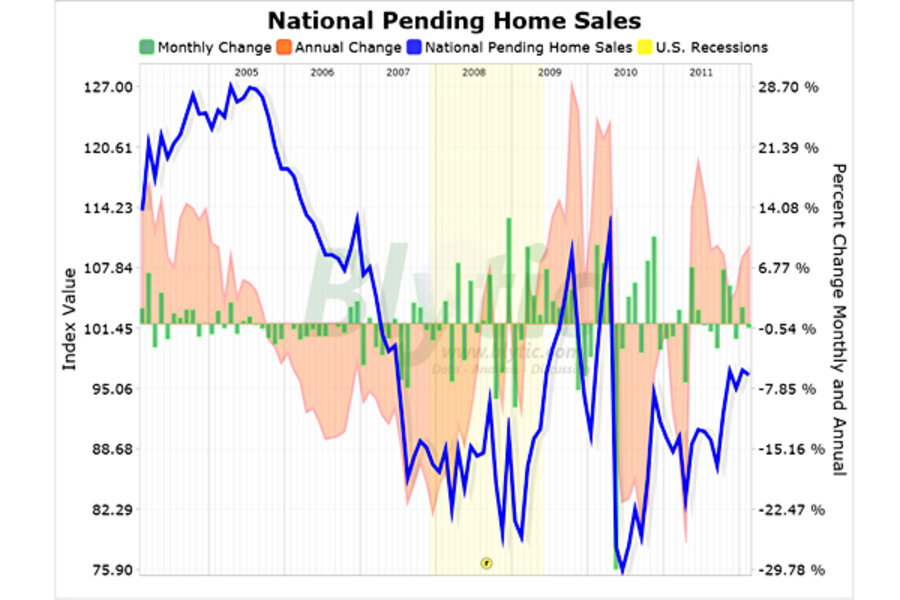Pending home sales slightly down in February, but up since 2011
Today, the National Association of Realtors (NAR) released their Pending Home Sales Report for February showing that pending home sales declined a bit with the seasonally adjusted national index falling 0.5% since January while increasing 9.2% above the level seen in February 2011.
Meanwhile, the NARs chief economist Lawrence Yun suggests that the emerging spring selling season could be strong with potential for the best year seen in five years.
"The spring home buying season looks bright because of an elevated level of contract offers so far this year ... If activity is sustained near present levels, existing-home sales will see their best performance in five years. Based on all of the factors in the current market, that’s what we’re expecting with sales rising 7 to 10 percent in 2012."
The following chart shows the seasonally adjusted national pending home sales index along with the percent change on a year-over-year basis as well as the percent change from the peak set in 2005 (click for larger version).






